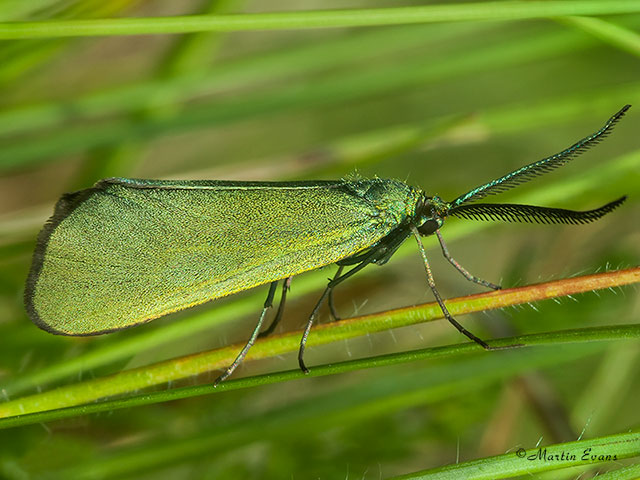Zygaenidae
54.001 Scarce Forester Jordanita globulariae (Hübner, 1793)
Notable A
Similar species: Forester Adscita statices has narrower, less rounded forewings. The males have 9 to 11 merged segments at the tip of the antennae. The females antennae thicken towards the tip. Cistus Forester Adscita geryon is smaller (M 10 to 12mm, F 9 to 10mm). The males have 8 to 10 merged segments at the tip of the antennae. The females antennae thicken towards the tip.
Forewing: M 12 to 15mm, F 10 to 12mm
Habitats: Dry unimproved, calcareous grassland slopes with a medium height sward.
Habits: Both sexes sit on grass stems during dull weather and visit flowers when it is sunny. The male flies much more actively in periods of warm sunshine.
Foodplant: At first the larva forms a blotch mine on a leaf of Common Knapweed or Greater Knapweed, then after a month it feeds on the underside of a leaf. It overwinters low down and then feeds again in the spring. It pupates in a grey-brown cocoon at soil level.




